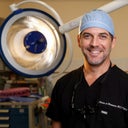It's been years since my tummy tuck but my body has been rejecting the green non dissolvable sutures according to my surgeon. The affected areas started bruising then swelling until I started feeling a poking sensation which resulted in tearing of my skin, fluid coming out, soreness etc. I had 2 of them fixed and I'm hoping that the rest of the sutures will not give me the same problem. Please tell me why this is happening despite of the fact that it's been years since I had my surgery?
Answers (5)
From board-certified doctors and trusted medical professionals
More Tummy Tuck Questions
See all Tummy Tuck Q&AWE SEND PRETTY
EMAILS
What’s trending? Who’s turning heads? Which TikTok myths need busting? We’ve got you. No fluff, no gatekeeping—just real talk. Get our free, unfiltered newsletter.

